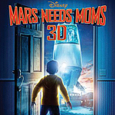Walt Disney Pictures/ImageMovers Digital (March 11 2011), Walt Disney Home Entertainment (August 9 2011), 4-disc set comprising of 3D Blu-ray, HD Blu-ray, DVD plus Digital Copy , 88 mins plus supplements, 1080p high-definition 2.40:1 widescreen, 7.1 DTS-HD Master Audio, Rated PG, Retail: $49.99
Storyboard:
When young Milo’s mother is kidnapped by Martians, he stashes away on their spaceship and launches himself on an intergalactic trip to save her…
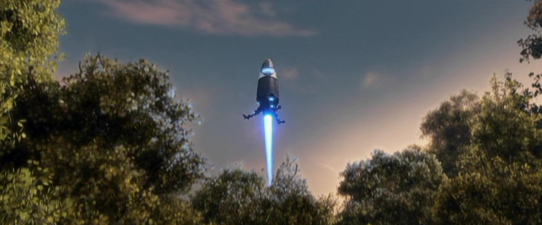
The Sweatbox Review:
When it comes to animated adaptations of modern American authors’ child-centric work, their material has not always translated well from page to screen. Much of the issues arise from length: a short story or picture-heavy book does not a full-length movie make, and the results can often vary from the imaginative to the downright wearisome. Theodore Geisel, Dr Seuss himself, collaborated directly with Chuck Jones to create cartoons in the 1940s before taking on How The Grinch Stole Christmas, a celebrated classic that failed second time around in a mega-budget Ron Howard movie despite some ingenious Jim Carrey make-up.
Likewise while the shorter TV medium served The Cat In The Hat well, while an embarrassing Mike Myers film, intended to cash in on Carrey’s Grinch, almost put paid to Seuss on film until Blue Sky Animation’s wonderfully realized Horton Hears A Who! set things right. More recently, William Joyce’s A Day With Wilbur Robinson and Maurice Sendak’s Where The Wild Things Are became the fairly enjoyable Meet The Robinsons and a drawn out borefest, respectively, that saw both stretched to breaking point and, with Wild Things, proved that John Lasseter should have been allowed to make his version back at the 1980s Disney Studios.

Berkeley Breathed is another writer not best served by animation, despite some attempts to bring his long-running Bloom Country series to the screen. A television special, Opus & Bill: A Wish For Wings That Work, failed to launch a potential program even with the producer participation of Steven Spielberg, and an independent feature film has been long-rumored but so far not yet forthcoming. In the meantime Disney, by way of their now-defunct association with Robert Zemeckis’ ImageMovers Digital, has been quick to translate his 2007 book Mars Needs Moms! into the latest example of everything that’s good and bad about 21st Century filmmaking for kids.
Does Mars Needs Moms – the movie – deserve its rather toxic reputation? The short answer is, unfortunately, yes, and on eventually seeing the film (I was one of many that skipped the theatrical run) I could see immediately why it failed so miserably, becoming that rare release: a Disney-branded picture that performed so spectacularly poorly that it caused the company to write its great expense of $150 million-plus off, against a box office take of less than $40m. Causing much embarrassment for the Studio, Disney accepted that audiences were not as embracing of ImageMovers’ style of motion-capture animation as the filmmakers were and shut the unit down, a planned remake of Yellow Submarine along with it.

I haven’t come across the original Moms book, but from what I understand it is picture-heavy and full of weird and wonderful creatures from Breathed’s imagination. Herein lies the film’s two and most vital problems: the book is light on story, but heavy on visual invention, whereas the movie is the complete opposite, being over-complicated and at times densely plotted even though not much is ever going on, while dumbing down the aliens to humanoid figures that don’t weird enough, or wonderful. In fact, after his rather obvious Victorian London featured in Zemeckis’ previous A Christmas Carol, production designer Doug Chaing has conjured up just as unimaginative Martian locations. Who knew that the underground infrastructure of Mars looks just like the inside of a Tron: Legacy computer game?
Those long-time readers that know I’m not the greatest proponent of the motion capture technique may well be expecting me to blast the film outright simply because this is the method used to animate the characters here. It’s true that I haven’t warmed to the purely motion-captured features in the past, but that’s really down to the quality of work. I have a total admiration for the astounding level of emotions displayed in the likes of Weta Digital’s Gollum or Kong, or Sonny in I, Robot, and have great hopes for the upcoming Adventures Of Tintin, but I just don’t believe Sony Pictures Imageworks or its ImageMovers successor have what it takes to convey believable humans.
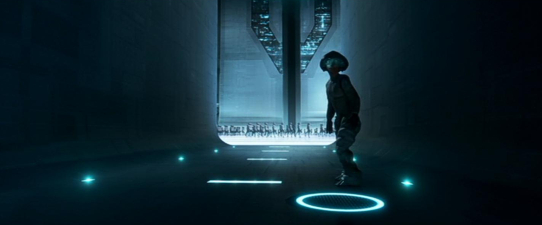
But I was very impressed with elements of Zemeckis’ A Christmas Carol, and though the thought of a Yellow Submarine remake filled me with dread, I admit that I was at least a bit more than intrigued. However, the motion capture is the least of Mars Needs Moms’ worries, and although the brilliantly whimsical designs of Breathed’s book have been thrown out the spaceship’s portal, the simplified aliens here express a sometimes eerily accurate depiction of movement that is also quite impressive.
Actually, Zemeckis takes a producer’s back seat here, to allow director Simon Wells a chance to hog the megaphone. And hog it he does, also expanding the book and writing the film’s screenplay with wife Wendy. Now, I am genuinely a huge Wells fan, from his days at Amblimation in London and through his co-direction of The Prince Of Egypt at that studio’s successor DreamWorks. I was very taken with his remake of his own great grandfather’s novel The Time Machine: no easy task when I have loved George Pal’s 1960 original since childhood, and I felt for him when the pressure of directing such a big blockbuster meant he had to take time out before post-production began.
I greatly enjoyed the resulting film and his name on the credits was one of the main reasons I was interested in seeing Mars Needs Moms. I reasoned that perhaps Wells had found the perfect medium in mo-cap, having a very real relationship with the performing actors but also keeping one foot in the animated world, and to a large extent this seems to be true, although his British background might have hampered his take on typical American life: the rather chaotic life that our boy hero Milo leads seems a bit too caricatured from the outset.
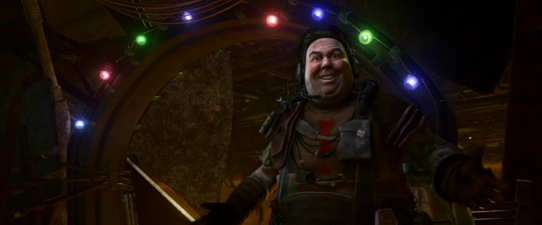
It did seem odd to me that Seth Green is publicized as being Milo, although we don’t actually hear him – he’s been dubbed by another Seth, a young lad, Dusky, apparently because part-way through shooting it was decided Green’s voice felt too mature for the character. I personally can’t really see this: Green is Chris on Family Guy and, while that’s a caricatured role, it couldn’t have been that hard for him to find the right pitch here. Also, why advertise an actor in a role where we don’t really see or hear him? Who cares who’s making the digital puppets move, it’s the vocal that we engage with and that really bring these figures to life.
As such, it’s strange to see Milo on screen: he creepishly looks like Seth Green, or at least one can see Green in Milo, but then he doesn’t sound like him. The eyes here are rendered a little more realistically than before, but just when one might think the process has moved on, in comes Joan Cusack, as Milo’s Mom of the title, who instantly destroys all goodwill toward the mo-cap in just a couple of scenes. Seriously – and I was all ready to put my disliking of the method on hold to try and enjoy the film for what it was – it is as if some performance code has been lost in translation between Cusack’s on-set actions and the resulting animated character.

As I say, much of the Martian animation, boring designs aside, is actually at time very breathtaking, but late in the film Mom freaks out…and it’s just plain embarrassing animation, mo-cap or not. And it’s not Cusack’s fault: in the end credits some performance studio outtakes are shown (confusing for those that don’t understand the process or what they are seeing) and it’s not only clear how much more expression she has in real life but also how much more she could have brought to the role had it been live-action (and, frankly, there’s no reason it couldn’t have been). When it comes to moments like these, I just can’t see how obviously talented filmmakers can miss how bad it looks, and Mars Needs Moms’ Mom is just awful.
The story is likewise a little back to front and, from what I understand from Breathed’s book, actually eschews some much needed early material that sees the Martians preparing to kidnap the world’s Moms so that they can gain their knowledge of how to bring up their unruly offspring. It sounds like quite a fun premise, and I imagined Milo would find out about their plan, and potential nabbing of his own Mom, and head off (with some other kids?) to save the day. However, the movie is vastly different and not nearly as excitingly plotted: instead, we just get one Mom – Milo’s – kidnapped, and just Milo himself heading up to Mars to get her back.
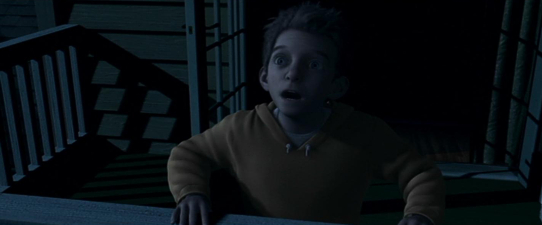
Milo’s Mom’s abduction scene is actually well played, and quite exciting (even if mo-capped Milo’s Botox-like expressions can’t really convey his amazement when he sees the ship), but it doesn’t help that the story sets up Milo as an annoying kid to start with, and there’s not really a lot of sympathy for him it has to be said. Not to labour the point, but the mo-cap doesn’t offer much support: while the Martians are well done, the human animation just lacks life, especially when any action is involved, which comes over as having the characters moving too slowly.
There’s an early scene where Milo doesn’t get his own way and it just looks as if the computers can’t keep up with his jumping up and down in frustration and they have to slow it down to be able to capture all the data. The answer is that the actors seem to have been told to “keep moving” excessively in order to try and keep things alive, which has the opposite effect of calling attention to themselves (indeed, one of the things I was most awestruck with was when one alien simply stood still; the ever so slight motion on her body seemed very real).
On his adventures, Milo meets another lost boy, the bizarrely named Gribble, who works a little better as a mo-cap character because he’s so frantic. But then, that’s also the movie’s biggest problem – he’s too frantic! The intention is clearly for him to be the mid-movie entering fun character that everyone falls in love with as a breath of fresh air, but the character – who looked like a fat Jason Lee to me – so dominates his scenes that he unbalances the film. When Gribble calms down things get better, but the pair’s relationship still consists of a lot of shouting, which gets tiresome pretty quickly.
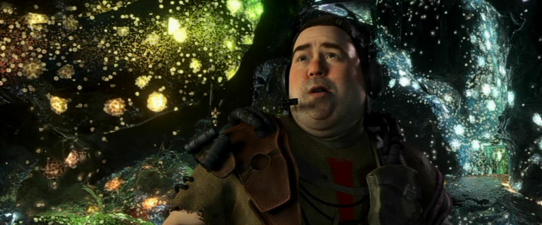
Unfortunately, we’re also stuck with these two for much of the movie’s episodic duration (and very long it feels too: on glancing at the running time for the specification check for this review I was surprised to see it listed at just 88 minutes). By the time a female alien ally character is introduced, the movie is by turns simplistic in plot and densely overcomplicated. I just guess the filmmakers thought a dense, often clichéd and frantic adventure would pull in the kids, so it at least doesn’t seem I’m the only one not to have found myself enthralled. And sticking with the same two characters means there’s very little breathing space, even when Gribble’s inevitable and supposedly unhappy backstory is revealed.
Quite often I found my mind wandering off, but when the soundtrack and characters are annoying you, there’s not really not much else to do other than to try and admire the visuals, although this is where some of the mo-cap hiccups started to creep up on me. Maybe the added extra 3D dimension offers up some distractions? Um…well, it can’t be said that the 3D is really called upon to be showy, and misses a few opportunities to play with the format. When the Martian ship lightspeeds through a slit in space, there’s a big chance to have some 3D fun for the sake of it, but it’s not picked up on. Likewise, a later potentially suspenseful moment when our heroes make a wire-climbing trip back up to the surface could have provided a much needed action moment to break away from the talky nature.
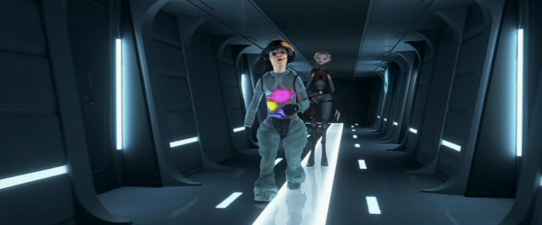
There are some good shots: a fall through an elevator shaft is quite a sight in 3D, as are the mountains of Mars trash, although they’re not reason alone for the format, which only plays up how lacking the character interaction is: for all the tumbling through the Martian trash the humans never feel like they’re ever truly touching their environments. Again, I think translating Breathed’s original illustrations would have been the way to go for not only being an authentic translation for fans but also more visually interesting. Originally the Martians were like distant relations of the Topps/Tim Burton Mars Attacks! aliens, while Milo was practically Seussian in design, but here everything looks borrowed from other places.
Much like the movie itself, which in trying too hard to be hip finds itself lightyears behind the times in comparison to other family orientated sci-fi animation in the same mould (9, Wall-E) and doesn’t really know how or when to end. I counted three or four times it could have wrapped up nicely, though I did smirk to myself when the inevitably hoped-for sequel set-up with Milo asking Gribble, “Will I ever see you again?” can only lead to their disappointment: the film’s crushingly bad box-office means Milo and Gribble won’t be seeing each other again. Which leaves the end titles randomly set to Queen’s Crazy Little Thing Called Love but for a tenuous “love” link, and features a horribly misjudged pee gag. I can see why good word of mouth was short in supply during the theatrical run; too one-note, Mars Needs Moms simply doesn’t offer enough variety to keep us engaged.
Is This Thing Loaded?
As with Zemeckis’ A Christmas Carol, I wouldn’t wonder if there’s a contractual agreement to reveal as much about the motion capture process as possible on the eventual home video releases of the ImageMovers films, since this follows along the same lines extremely closely. Like Carol, Mars Needs Moms comes configured in multiple formats, this flagship set containing a BD-3D disc, the regular high-definition BD, a standard DVD and a Digital Copy file for portable device play, which truly stretches the gamut in the ways you can view the film, from the big-screen multi-dimensional experience to a tiny thumbnail image.
While it’s nice to see something added to the Blu-ray 3D disc, the 60-second Mom-Napping moment doesn’t quite add up to the “alternate and deleted scenes” offered on the back cover. Fully completed in 3D – hence the inclusion on this disc only – Milo catches the Martians right in the act of abducting his mother, although the changes are fairly minimal and it basically plays out as in the final movie.
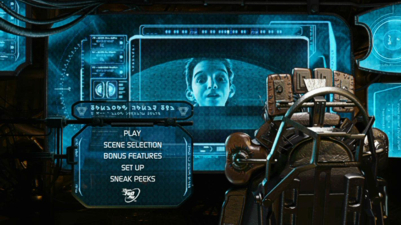
On the non-3D regular Blu-ray Disc (in both sets), most welcome is the informative feature-length Life On Mars: The Full Motion-Capture Experience, a complete recording of the motion capture performances accompanied by an optional audio commentary (with amusing introduction) by director Wells, Green and Gribble’s Dan Fogler. Presented either as a magnified full screen or picture-in-picture alongside the final feature, this is well worth a dip in and out of – if only to see how much more expression and life the actors bring to their characters that the digital puppets just can’t replicate. Often, the picture-in-picture window offers two views of the same shot from different angles; the footage is not the actual mo-cap data shots, but on-“set” material that shows everything that was going on during the shooting.
The footage looks to have been shot in standard definition, or a lower resolution HD format, but appears to have been upscaled here and although there’s a lot of composite chroma noise, has obviously been primarily designed to play in the smaller window. It looks as good as it needs to when blown-up, which is a nice touch, but when switching to the mo-cap footage full screen we lose the final CG rendered result – a shame when it might have been nice to literally switch between them, reducing the finished film to the smaller window instead so as to keep track of both. As with the similar A Christmas Carol offering, it’s good to hear from the filmmakers alongside this peek behind the scenes, but I’d have liked to have seen “more” of what went into the creation of those shots, such as the rehearsals beforehand and creative choices, though we do get a chance to hear Green’s original vocal takes.
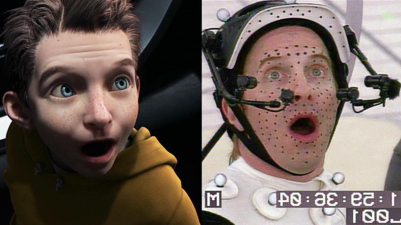
Unfortunately, there isn’t any kind of documentary featurette to balance those shortcomings, but the commentary does its fair share in providing an insight while the three contributors variously goof-off between taking things more seriously (sadly, the fun that was obviously had making the film doesn’t rub off on the final result). Emphasizing that “fun” aspect, Fun With Seth shows off a couple of minutes of the actor clowning around with the other performers, and Martian 101 briefly explores the alien language developed for the film.
A generous half-hour helping of Deleted Scenes offers up the customary intros from Wells, as well as an Extended Opening (and other moments) that didn’t feel that extended, a little more Gribble backstory and additional ad-libs. Presented as a mix of everything from the actors’ mo-cap footage through initial CG models to finally lit and colored footage, there’s not really anything here that adds anything other than extra length to the movie, although a five minute Martian Monorail scene might have added some much-needed excitement.

On the DVD, the movie is presented without any additional commentary options, but does include the two Fun With Seth and Martian 101 clips, although why the half-hour of Deleted Scenes weren’t included smacks again of using this as a way to force viewers to go Blu. Across all discs (except the 3D disc, which carries nothing), primary Sneak Peeks promote Prom, The Lion King (Diamond Edition and on stage), Winnie The Pooh, Phineas And Ferb Across The Eighth Dimension, Spooky Buddies, Disneynature’s African Cats and Pirates Of The Caribbean: On Stranger Tides.
Case Study:
For whatever reason, Disney has elected not to provide Mars Needs Moms’ 3D combo pack with a dimensional lenticular front, as have appeared on the Studio’s other such disc releases recently. Perhaps they didn’t think it was worth it for this particular title or, perhaps, the lenticulars were an up-front attention grabber: it will be interesting to see if they return for more anticipated titles later this year. We do, however, get an embossed slipcover, which awards the film some dignity at least, with the ImageMovers Digital logo on display proudly next to the regular Disney badge.
The artwork across all editions (Blu-ray 3D Combo, Blu-ray+DVD, and single DVD) is the same, though the addition of the “3D” on the combo is pretty bad, covering up part of the spaceship that is supposedly the selling point of the original poster (an image that lazily recalls The Polar Express). What’s fun to read is the back cover blurb, which tries to set up some mystery but struggles to come up with anything other than hyperbole about the film. The usual inserts are all present, with a cover sticker offering an $8 saving when Moms 3D is purchased alongside The Fox And The Hound Blu-ray, although it’s only valid up to August 31, 2011.
Ink And Paint:
Blu-ray 3D: Uncanny valley aside, Mars Needs Moms looks suitably, and expectedly, brilliant in HD. Although I have seen quite a few animated and live-action films in 3D now, this was my first 3D motion capture experience and I actually found the extra dimension made the uncanny aspects come off even more unnaturally. There’s a little more use of the forward plane than most animated films, which usually endeavor to present more depth to the frame, with a few more items leaping out from the screen, but the feeling here is that it’s has reverted back to being a gimmick as opposed to being there to assist the story or characters. Had the Martians exhibited a look more faithful to Breathed’s wild ‘n’ wacky originals there could have been a lot of fun to be had, but the removal of his basic elements is this film’s biggest concern, 3D or not.
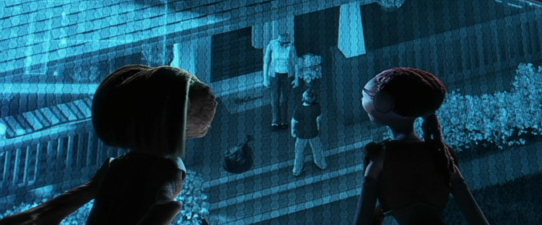
Blu-ray Disc: The “flat” transferred disc may not have things flying out at you from the screen, but the presentation is just as good, if not better. As a couple of our 3D reviews have stated before, it seems the format works best in the home with brighter scenarios…and Mars Needs Moms is often very dark, or at times very bright and garish, which doesn’t help playing with the brightness levels. I actually thought, without the need for the dimensional goggles, that the detail in the image was cleaner to pick out: the underground Martian trash mountains are actually impressive when one can really see them clearer, for example. On the DVD the image is as perfectly presented as possible in standard definition (also replicated on the Digital Copy disc), although even allowing for the loss of resolution I did think it came over softer than it should.
Scratch Tracks:
If nothing else, Mars Needs Moms’ soundtrack should be put forward for one of the best mixes of the year. Not for a while has my system been given such a workout, with absolutely kicking bass thundering through my home theater set-up when the mom-napping Martians’ spaceship takes off, which is surely some impressive demo material. The rest of the film has some nice touches too, and even though I didn’t appreciate the continuously shouting cast members, it’s all audible and perfectly balanced, at least. Dubs and subs include English, French and Spanish across all discs in various flavors, from the groundshaking DTS 7.1 to Dolby 2.0.
Final Cut:
Although it’s somewhat infamous box-office fortunes will probably see Mars Needs Moms ultimately disappear into obscurity, films like these don’t exactly do any favors for the quality Disney brand of animation, a message that the Studio seems to have taken to heart by closing down Zemeckis’ unit. Motion capture can be a valid animation method, but despite my lack of enthusiasm for ImageMovers’ style this isn’t the major problem I had with this film, which promotes and then hides Seth Green as its nominal star, and resorts to some clichéd storytelling among some unexpectedly boring visuals and shouting soundtrack. Zemeckis and Wells may well bounce back again – and as two of my favorite filmmakers I sincerely hope they do – and an agreement with Universal is said to be a done deal, but while Mars may well need Moms, Moms (and Pops) shouldn’t feel the need for Mars Needs Moms, which is movie night rental fodder and not much more.
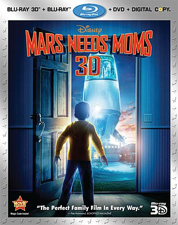 | ||
 |



